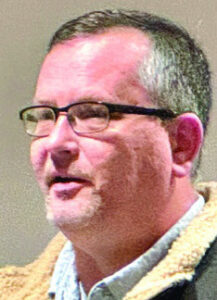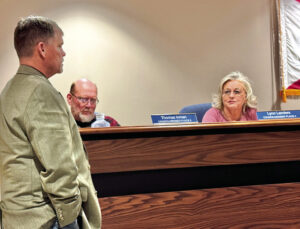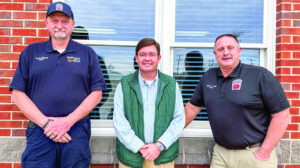Local woman near Boston manhunt
Russellville native Anna Stanford thought she was going to spend a nice day with some of her friends in downtown Boston where they planned to enjoy a tried and true Bostonian tradition – Marathon Monday, which is what most Bostonians refer to as the day the Boston Marathon is held.
But little did she know that the event she was looking so forward to would soon become host to terror and chaos and the city she had adopted as her own would be enduring fear and uncertainty for the next five full days.
Stanford, a 2005 graduate of Russellville High School, has been living in the northwest Boston suburb of Arlington, located just 10 miles outside the city, since January when she began a Master’s program for Molecular Biology at nearby Tufts University.
Stanford said she had heard from several of her friends that the marathon was a huge social event since it was held each year on Patriots Day, a Massachusetts state holiday, and all the area universities give students the day off.
Wanting to join in on the traditional fun of her new community, Stanford and some of her friends met for lunch at a restaurant located along the marathon route near the finish line where they could watch the winners’ triumphant finishes as they ate.
As the day approached 2 p.m., Stanford said she and another friends were anxious to watch the race from a different angle so they began to make their way through the mass of spectators gathered along the streets.
“After pushing through the crowd to travel only three blocks in almost 20 minutes, we decided to leave the finish line area and walk toward Fenway Park instead to watch the end of the Red Sox game,” Stanford said.
That proved to be a significant decision since the restaurant they were eating at was located directly across from the site of the second explosion, which occurred about 2:45 p.m.
And from where Stanford and her friend were, they had no idea anything had even taken place back at the finish line.
“Not long after the end of the baseball game, I start getting many text messages checking up on me and explaining what had happened,” Stanford said.
“At that point, we did not know whether it was an accident or intentional. Just in case, we decided to walk back to my friend’s apartment to watch the news before I got back on the T [Boston subway] to go home.”
Stanford said during the walk to her friend’s apartment is when she started to realize the gravity of the situation.
“As we got nearer the area of the explosions, the smell of smoke was fresh in the air,” she said.
“Police officers were directing traffic around a line of ambulances at least four blocks long. The subway stops necessary for me to get home had been closed and cell phone service was poor which made it difficult to get in touch with other friends who were supposed to be near the race.”
Stanford said she was finally able to make it back to her home in Arlington after 8 p.m. but the situation had even spread to her quiet little suburb.
“When I went home there were a number runners wandering the streets still in running clothes because their hotels had been evacuated,” she said.
“I cannot imagine being in a strange city with no where to go and no access to any of your belongings to contact friends or family, but most people were surprisingly calm.”
After the events of that day, Stanford said the rest of the week for her had been relatively normal until Friday morning.
“I was awoken at 6:45 a.m. on Friday with multiple notifications on my cell phone telling me to stay inside,” she said. “I wasn’t sure of everything that was going on but CNN fleshed out the details for me.”
The details were that the two suspects in the Boston Marathon bombing had been involved in a chase and a shoot-out that fatally wounded an MIT police officer the night before.
One suspect had been killed and the other suspect was believed to be in the Boston suburb of Watertown, which was only 2.5 miles away from where Stanford lived.
Most of the area was put under lockdown and others not in the direct lockdown vicinity were strongly encouraged to stay indoors.
Stanford said her neighborhood was just outside the lockdown perimeter but there weren’t many people outside.
“There were hardly any cars on the streets and the parking lot of my apartment complex was full while it’s usually empty on a work day,” she said. “I wasn’t necessarily scared, but I was definitely anxious and nervous.”
Stanford said she had some studying to do so she tried not to stay glued to the TV and the developing news, but it was hard not to flip it on every few minutes and see if there were any updates.
“Lots of people were also calling to check on me that day so I was distracted most of the time,” she said.
Once the suspect was apprehended in Watertown just before 9 p.m. Friday, Stanford said she was relieved to have the ordeal over.
“On April 15th, I felt fortunate to be able to leave the city and return to the suburbs, but my feelings of safety in the suburbs changed a bit on Friday when the suspects were known to be within a few miles of my apartment,” she said. “Many of the pictures in the news of Watertown were of the shopping center where I usually go to Target – not somewhere you would expect a shootout to happen.”
But even though the past week has been unnerving, Stanford said it hasn’t changed her mind about living near a place like Boston.
“This incident is not going to keep me from living in cities,” she said. “I am still looking forward to moving downtown after graduation.”
She said the best thing that has come from all of the past week’s events is the acts of human kindness she has been able to witness in the midst of such a tragic situation.
“I have seen lots of support for victims and their families in the last several days and I have also seen a surge in pride in the city,” Stanford said. “It’s reassuring to see such a terrible situation bring out the best in people.”







